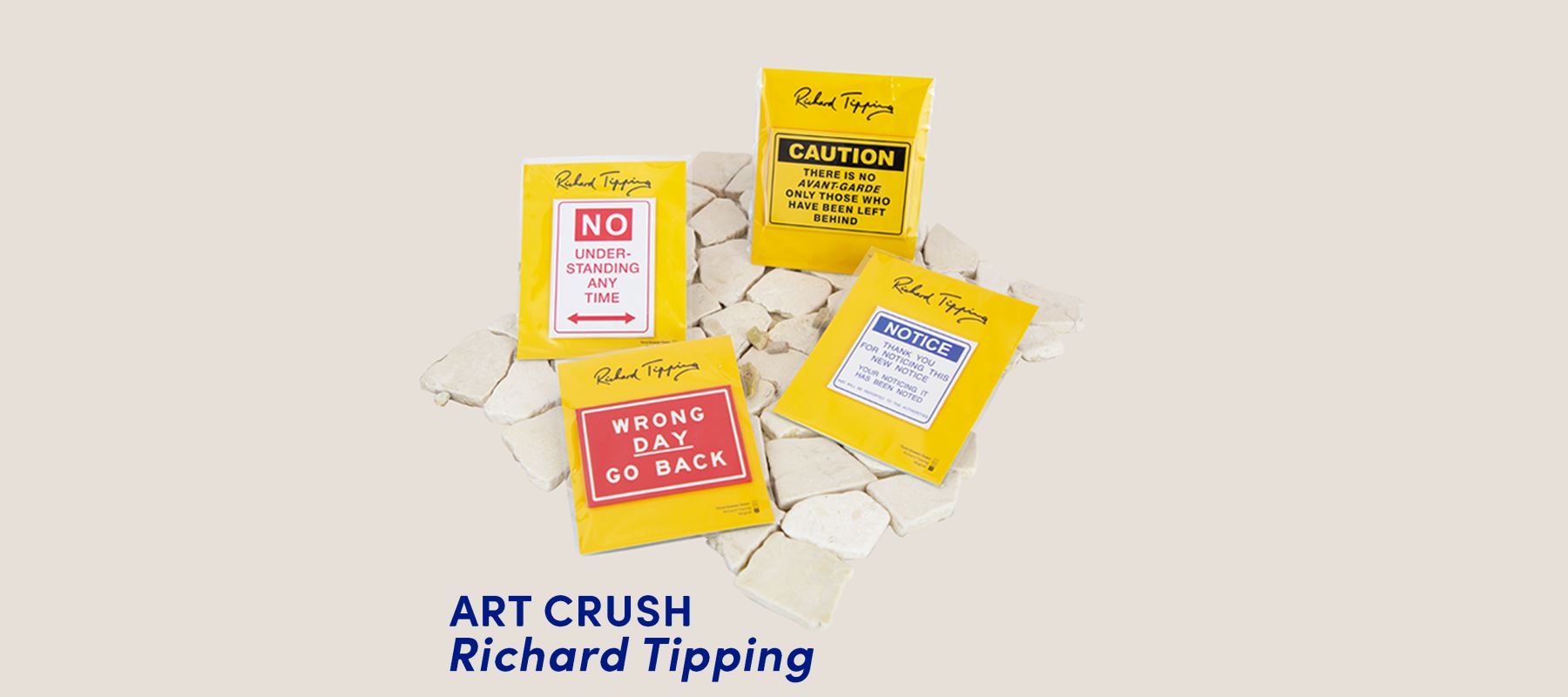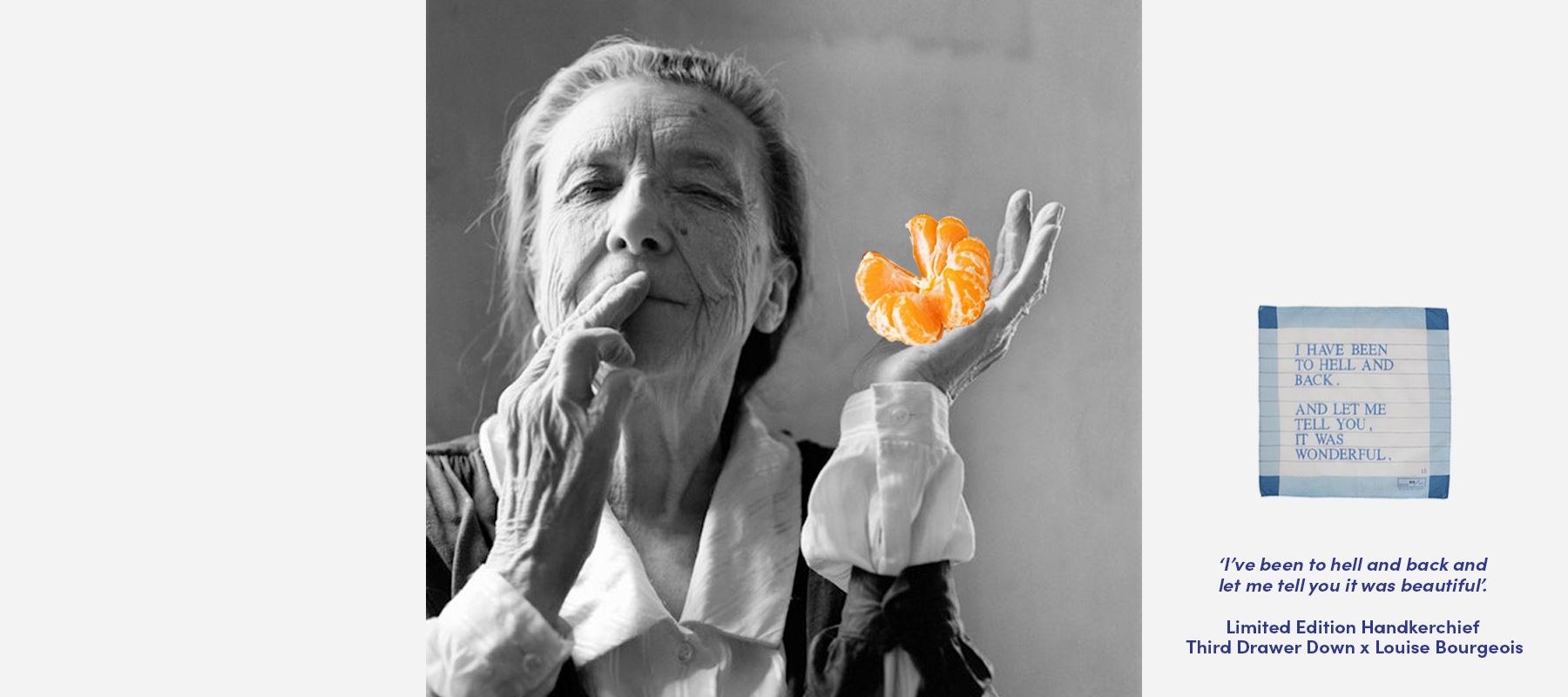Artcrush Q+A with Richard Tipping

Our latest instalment of Artcrush is the Australian poet and artist Richard Tipping. Charming and humorous we loved getting to know Tipping and understanding his process and iconic works.

We've had the privilege of collaborating with Richard Tipping, renowned for his captivating visual poetry and word art. Based in Australia, Tipping has left an indelible mark with his artsigns, textual sculpture, subvertising graphics, and striking large-scale public artworks, both permanent and temporary.
Tipping's artistic journey began in the 1970s when he started capturing the ironies and quirks found in public signage through his lens, often reshaping these signs to convey poetic messages. His acclaimed work "Signs of Australia" (1982) showcases many of these captivating sign anomalies. Notably, his iconic piece "No Understanding," housed in the National Gallery of Australia, exemplifies his mastery of public sign language.
We had a chat with Richard and learnt so much about the meaning behind his work and his process in making this iconic art!
Third Drawer Down: Tell us about why you wanted to work on this particular visual idea with Third Drawer Down?
Richard Tipping
No King takes a gentle No Smoking sign (gentle because it includes a ‘thank you’ in anticipation) and removes the cigarette from the red circle of ‘no’, as well as the ‘Smo’ of smoking. Suddenly the message is simply NO KING: a broad objection to royalty, any royalty, with a polite sting.
Third Drawer Down:Your work is often sculptural, how does location and scale play into your process and does it influence the final result of your work
Richard Tipping Large scale public art, both for permanent works and for temporary ones, is a hard gig to get, and achieving them is inevitably both arduous and challenging as commissioning committees, curators, engineers, manufacturers and installers all have their place. Everything I know comes from experience as a maker of documentary films, where you have to wear many hats while keeping your eyes squarely on desired outcomes.
Kangooroo as an enamel badge represents the idea of an artsign in two parts where the kangaroo has jumped out of the sign and is saying “Ooroo” as “See you later” in that very Australian way. With the larger sign having a width of three metres on a five metre pole, this is a substantial sculpture which has been shown several times in Sydney and is now looking for a home in the national iconography.
Richard Tipping Caution Avant-garde uses the standard template of a ‘caution’ sign to upend the idea of the ‘avant-garde’ as an outdated concept. It’s true that we can’t easily tell which art is ‘ahead’, as only history decides what matters in the long term; but in a twist “only those who are left behind” are singled out for sardonic observation.
Third Drawer Down How do you describe to people what you do?
Richard Tipping The name of my gallery in a small country city in New South Wales is WordXimage, and that pretty much describes my key interests. Working in the fertile ground between images and words (ranging from visual concrete poetry to textual sculpture and subvertising graphics), I grow surprises. These need to work upon the mind even with repeated viewings.
Third Drawer DownYour work subverts the ordinary and gives weight to language. Can you tell us an author or poet that has surprised you or caught you off guard?
Richard Tipping Marcel Duchamp’s readymades included making existing things into art by placing them in unexpected combinations: for example, Bicycle Wheel (1913) with a standard front wheel and fork placed on a stool. Kangooroo could be described as an ‘adjusted readymade’ in Duchamp’s terms as an existing sign has been changed in meaning by the removal of the kangaroo graphic and the addition of one word, ‘ooroo’.
Third Drawer Down What are some favourite products from our store?

Third Drawer Down Can you tell us the story of one of your favourite objects in your home?
Richard Tipping I have a large collection of strange things in my home, as well as art by people whose work I admire. A favourite is a screenprint by the Scottish artist Ian Hamilton Finlaymade in 1970, which says elegantly in narrow text: “Evening Will Come They Will Sew The Blue Sail.” To me, this carries the power of memorable words embodied in visual form.




